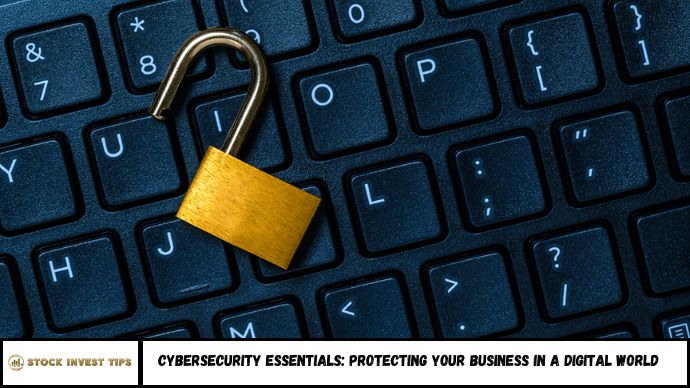Cybersecurity is no longer optional. With rising cybercrime, every business big or small must prioritize digital protection. This article outlines cybersecurity essentials every company needs in 2025, including key technologies, best practices, and real-world strategies to safeguard data and operations from increasing threats.
As businesses digitize operations, handle more data, and embrace remote work, cyber threats have surged. In fact, global cybercrime costs are projected to hit $10.5 trillion annually by 2025, up from $3 trillion in 2015. From ransomware attacks to phishing schemes, no company is immune.
Are you doing enough to protect your business from digital threats?
This guide dives into the core cybersecurity measures you must implement to defend your systems, employees, and customer data. Whether you’re a startup or an established enterprise, the strategies outlined here can help you stay ahead of attackers in an increasingly complex digital world.
Why Cybersecurity Matters Now More Than Ever
1. Cybercrime Is Escalating Rapidly
- Ransomware attacks rose 95% in 2023, with small and mid-sized businesses being primary targets.
- 43% of cyberattacks now target small businesses, yet only 14% are prepared to defend themselves.
2. Regulatory Pressures Are Increasing
- Laws like GDPR, CCPA, and HIPAA mandate data protection and carry severe fines for breaches.
- Compliance is no longer just legal—it’s a competitive advantage and trust factor.
3. Remote Work and Cloud Adoption Expand Attack Surfaces
- A distributed workforce increases vulnerability, particularly through unsecured home networks and personal devices.
- Cloud services require careful configuration and monitoring to remain secure.
Cybersecurity Essentials Every Business Must Implement
Let’s break down the critical components that form the foundation of a strong cybersecurity strategy:
1. Strong Access Control and Authentication
- Use multi-factor authentication (MFA) for all user accounts.
- Implement role-based access control (RBAC) to limit data exposure.
- Regularly audit who has access to what.
2. Up-to-Date Software and Patch Management
- Automate updates for operating systems, antivirus, firewalls, and applications.
- Patch vulnerabilities as soon as vendors release fixes.
3. Employee Cybersecurity Training
- Conduct regular training on recognizing phishing, malware, and social engineering tactics.
- Simulate attacks to test employee response and awareness.
4. Data Backup and Recovery Plans
- Perform automatic, encrypted backups regularly.
- Store backups offsite or in a secure cloud environment.
- Test recovery procedures to ensure business continuity.
5. Endpoint Protection and Firewalls
- Use next-gen antivirus and endpoint detection and response (EDR) tools.
- Deploy firewalls to monitor and control incoming/outgoing traffic.
- Segment your network to contain breaches.
6. Secure Cloud Configuration
- Monitor cloud permissions and activity logs.
- Use encryption for data at rest and in transit.
- Choose vendors that follow strong cybersecurity frameworks (like ISO 27001 or SOC 2).
7. Incident Response Plan
- Develop a documented plan with clear roles and response actions.
- Define steps for detection, containment, notification, and recovery.
- Regularly test and update your incident response strategy.
Emerging Cybersecurity Trends to Watch in 2025
To stay ahead, businesses must also watch emerging trends:
- AI-Powered Threat Detection: Machine learning can now identify threats faster than manual methods.
- Zero Trust Architecture: “Never trust, always verify” becomes the new security baseline.
- Cyber Insurance: More firms are purchasing cyber coverage to mitigate risk.
- IoT Security: As more devices connect to networks, they become new attack vectors.
- Privacy-Enhancing Technologies (PETs): These tools protect user data while complying with regulations.
Cybersecurity Checklist for Small to Mid-Sized Businesses
Use this quick checklist to see if your business is protected:
Use MFA on all key systems
Regularly update all software and devices
Train employees on phishing and safe browsing
Back up data and test restoration
Use antivirus and firewalls across all devices
Monitor and audit cloud access and activity
Have a tested incident response plan
FAQs
1. What is the biggest cybersecurity threat to businesses in 2025?
Ransomware remains the top threat, especially to small businesses, with attacks becoming more targeted and sophisticated.
2. How often should employee cybersecurity training be done?
At least twice a year, with quarterly phishing simulations to reinforce habits and update employees on new threats.
3. Can cybersecurity be fully outsourced?
Yes, via Managed Security Service Providers (MSSPs)—but internal awareness and oversight are still critical.
4. Is cyber insurance worth it?
Yes, for many businesses. It can cover recovery costs, legal fees, and even ransom payments if coverage applies.
5. What’s the first step for businesses just starting cybersecurity?
Begin with basic risk assessment, then implement access controls, backups, and employee training.
6. How much should small businesses spend on cybersecurity?
Experts recommend 5–10% of your IT budget go toward cybersecurity, depending on the industry and data sensitivity.
Conclusion
Cybersecurity is no longer just a technical issue—it’s a business survival issue. In today’s digital economy, cyber threats are constant, evolving, and costly. Fortunately, by following the core cybersecurity essentials outlined here—like strong access controls, regular updates, and employee training—you can dramatically reduce your risk.
As threats grow in complexity, businesses must evolve their defenses. Whether you manage IT in-house or with outside help, staying proactive is the key to protecting your assets, data, and reputation.

